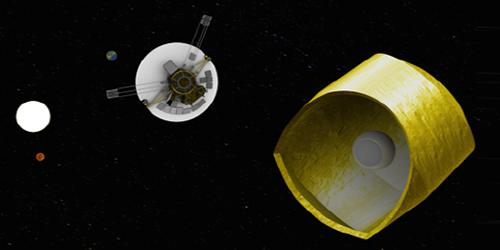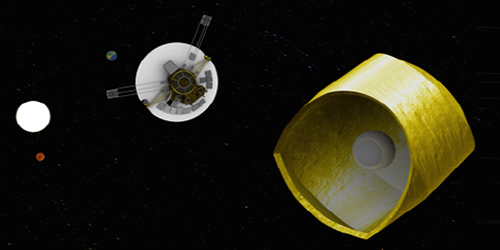Testing Gravity On Solar System Scales
Newtonian gravity is an extremely well-tested theory on human scales. However, alternative theories attempting to explain dark matter or dark energy predict that there might be small deviations, on large spatial scales, from the classical dependence of the gravitational force. NASA’s Pioneer 10 and 11 spacecraft flew beyond Jupiter and provided a means of characterizing gravity on planetary scales, but those measurements suffered from uncertainties due to the difficulty of accounting for drag caused by various instrumental effects. Now, researchers at Stanford University, California, have proposed an optimized space mission to measure modifications to Newtonian gravity on Solar System scales.
Daniel DeBra and his colleagues propose inferring the gravitational force of the Sun by measuring the position and motion of a spacecraft flying to 100 times the Earth–Sun distance. The proposed spacecraft would undergo a series of planetary flybys to gain momentum before coasting perpendicular to the plane of the Solar System, a trajectory that minimizes the uncertainties due to both interplanetary dust and the Kuiper Belt’s gravitational pull. The authors also propose a spacecraft design that would reduce the effect of nongravitational forces such as thermal forces arising from solar radiation. DeBra and his team suggest that the spacecraft will be able to measure deviations to Newtonian gravity 100 times more precisely than previous measurements on similar scales. Such sensitivity would be sufficient to test certain theories of modified gravity. The new data will also provide the first direct measurements of the mass distribution of small objects orbiting in the Kuiper Belt beyond Neptune.
This research is published in Physical Review D.
–Katherine Kornei





